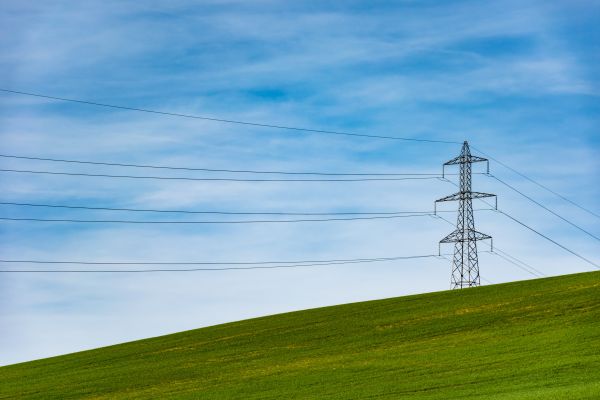
During the late 2000s, around when I started this blog, there was a trend among young male entrepreneurs called “Monk Mode.”
Everyone had a different idea of what that term meant, but generally it referred to taking a definite period of time – a week to three months or more – to focus with unusual intensity on certain important and fruitful pursuits, while abstaining from certain distracting or self-defeating activities.
Somewhat like a monk, you would voluntarily adopt a standard of heightened discipline, following a few non-negotiable rules, in order to bring certain important things to the fore of your life. A person might do this in order to launch a website, finish a manuscript, or return to the level of fitness they enjoyed in college.
The last time I heard this phrase was around 2009, and at the time it seemed indistinguishable from “working hard until I finish this current project,” which is what I was always trying to do anyway.
Read More

Imagine that when you die your life is converted into an extremely long, first-person YouTube video, which you may review at your leisure.
While you’re fast-forwarding through it, looking for certain memorable moments, one thing you’d see frequently is a person you know entering the room you’re in, talking with you for a while, and then leaving for a much longer while. Seeing people come and go like this might crystalize one of the poignant realities of living a human life: you’re the only one who’s there from start to finish.
In life, there’s you — the omnipresent Protagonist — and then countless Other People. Most of them are bit players, but some of these Other People are major characters in your story. They might spend quite a lot of time onscreen, but they always remain Other People. You never get to see inside their heads, you don’t get to choose their behavior, and ultimately you know them only by what they do and what they say. Most of the time, no matter how large their role in your story, they’re simply offscreen — somewhere out there in the world, doing who knows what.
I had a surreal moment, while having dinner with one of my favorite Other People, in which I realized that at that moment, as I sat across a Formica table in a local pizza place, that I was the Other Person. At least for my friend, I was the person who was not present most of the day, who at some point appeared at the door, smiled and sat down at the far side of the table, talked about what I’d been up to, ate some pizza, walked with her to the corner, said goodbye, and disappeared again into the distance. I am one of many Other People for her, just as she is for me.
Read More

Throughout my life, when faced with adversity, I’ve often wanted to magically become either a cat or an Olympic athlete.
Cats are enviable because they’re immune to worry and striving, and feel no pressure to accomplish long-term projects. They are completely satisfied to bask in a square of sunlight on the carpet, or squat on a dresser like a Zen chicken, blinking slowly and indifferently. It would be nice to have such a close alignment between one’s natural desires and one’s capabilities.
I’ve envied athletes for similar reasons, although they approach life very differently than cats do. Top athletes have clear goals and a kind of inner drive that seems able to move them through vast amounts of pain and difficulty. On some level they must want to get up at 5:00am to throw medicine balls against a wall. They want to run or ski or pommel-horse until their bodies – not their minds – threaten to quit on them, if that’s the cost of a shot at a gold medal.
I’ve never wanted a gold medal, but I’ve always wanted whatever quality it is that makes people want gold medals – or anything — that badly.
Read More

A million years from now, when alien anthropologists begin gathering evidence about what humans were like, they will definitely want to dig up the Self-help and Spiritual/Religion sections of our bookstores and libraries. There they will find direct evidence of what we yearned for and struggled with.
One thing that might surprise them is that we really wanted to be more present, and we struggled to do so for some reason. Our visitors will find no evidence that other earth creatures – cats, fish, protozoa – suffered any such difficulty.
Humans though, the aliens will note, spent most of their adult lives distracted from what is happening around them by thoughts of what happened earlier or could happen later. This problem was so great among the human species that returning to “the present” became a central element of both their religious practices and popular culture.
People designed mental exercises to get better at residing in the present moment, involving listening to mountain streams or patiently watching candle flames. Others wrote poems and stories about achieving a fabled state of calm abiding — in which one was lucid, engaged, and at ease –- with such fervor that some of these stories mutated into religions.
Authors wrote books like Be Here Now, Wherever You Go There You Are, and The Tao of Pooh, and gave talks in university auditoriums and monasteries. Musicians wrote songs about the primacy of being present in life, including wistful appeals like Do You Realize?? and tragic warnings like Cat’s in the Cradle.
Being present, just like being in love, was such a ubiquitous subject for human art and conversation that it was hard to get away from it, especially as new handheld technologies made the problem worse.
Read More

On road trips as a kid, I often ended up watching the mesmerizing rise and fall of power lines that lined the road. This was usually after I had exhausted the more accessible modes of entertainment I had with me — usually Mad Libs and 1001-facts-type books — and perhaps after a boredom-induced tantrum or two.
There was something pacifying about this silent rising and falling pattern. I would ignore the poles and just watch the endless black wire itself, staring right at the point where it met edge of the van’s window. The wire would dip down gracefully, like a figure skater about to swing her leg up into a double axel. Then it would accelerate up to its peak, and immediately swoop back down again.
That peak, that crest, would only last an instant, but there was a certain surreal thrill about it, like seeing a fish jump, or a shooting star. It was gone before you could really look at it, but you absolutely saw it, and in that silent instant of vanishing there seemed to be a wink of magic.
Years later, as a mindfulness-curious adult, I learned that human beings have been observing these moments of vanishing, on purpose, for a very long time. By noticing the instant where a thing disappears – a drop of water into the bath, a firefly’s glow winking out – people in various cultural traditions have tried to catch glimpses of whatever that bit of magic was that I first noticed on those endless rural car rides.
Read More

Since spring I’ve been training for my first half-marathon, and during the past month I’ve slipped behind the program. The trouble began when I missed a two consecutive Sunday runs – the longest and most important runs of the week — due to a combination of bad weather and general cowardice.
The simplest way to recover from this lapse would have been to do more running. I missed some miles. No big deal — I could make them up, or just resume the schedule the next day, and still be fine for the race. And I could aid this recovery effort by cleaning up my nutrition a bit and getting more sleep.
That is what a rational individual would do, anyway. In the weeks since the lapse, I’ve been running even less, eating more junk, and staying up later. My short runs began to feel like long ones, and I stopped doing the long ones altogether. Then I caught a cold and took another week off to recover.
This extended sort of lapse is what you could call a rut. The initial trouble was just a bump or a pothole – a jarring and unpleasant spot, but not a problem if you just focus on staying on the road until you’re past it. Instead, I veered into the soft ditch, the wheels sunk in, and soon I couldn’t seem to get back onto the road under my own power. I felt like I had to wait until conditions allowed me to get the wheels back onto the pavement, which means plodding along in the mud until the rut shallows out again on its own.
I think that’s what defines a proper rut—a loss of momentum so thorough that simply resuming what you were doing, as you might have after a single bad day, no longer seems like an option. Instead you feel like you have to work your way back to your regular programming, by way of a long and convoluted detour.
Read More

Each weekend of the summer I try to take a long bike ride to some part of the city I’ve never been to.
I do this for three reasons. It’s several hours of exercise that doesn’t feel like exercise. It also gets me out doing and seeing things, which makes me feel like I’ve used the day well.
The third reason is that looking at new things, even if they’re just new streetcorners or deer trails, helps me recover a certain uncomplicated way of looking at things that used to be automatic when I was a kid.
To select a destination, I use an obscure app called Randonautica, which creates an X-marker somewhere on a map of the city. The app’s “About” section says it chooses this location through “theoretical mind-matter interaction paired with quantum entropy to test the strange entanglement of consciousness with observable reality.” It says the app’s users, when they arrive at their prescribed locations, often find “serendipitous experiences that seemingly align with their thoughts.”
I assume this is tongue-in-cheek nonsense and that the co-ordinates are random. However, the place it tells you to go is indeed a real corner of the physical world. When you arrive at the spot, it never looks how you might have pictured it, and usually you witness something there that seems oddly significant.
The first time it sent me to a creekside clearing, where I saw a strange black glob in the water that turned out to be a mass of tadpoles. Another time it sent me to a gravel back lane near where I used to live, at a spot where someone had written “DAD!” on the fence in some kind of white resin. Another day it took me to a book-exchange box containing only children’s books and Stephen King’s Tommyknockers.
Read More

After being ousted from the Tonight Show, Conan O’Brien gave a moving farewell speech that culminated in a specific request to his fans: please don’t be cynical. He said cynicism is his least favorite quality and it doesn’t lead anywhere.
I remember liking that he said that, given how much grief his fans were giving Jay Leno over their very public time slot conflict. At the time I was 29 years old and approaching the peak of my own cynicism. Since then I’ve gradually adopted a more generous view of human beings. This is not because I’ve become a particularly more generous person, but rather because a cynical view of our species no longer strikes me as accurate.
I now think humans are mostly good, despite how reflexively we tend to disparage our own species. For example, when Foo Fighters drummer Taylor Hawkins died suddenly on tour in Colombia last month, I came across this very normal and predictable tweet:
”The first order of business when a bereaved family asks for privacy is of course to release a toxicology report. What a society.”
It’s not important that this thought came from local Winnipeg punk legends Propagandhi, because anyone could have said it, including me. But it is a perfect example of the common fallacy that humans can be fairly summarized as a mean and selfish lot.
Read More

DISCLAIMER: Obviously this is not medical or professional advice of any kind. These are my thoughts and you can read them if you like. I make no recommendations about what you should do and I take no responsibility for your choices.
The other day a friend shared what I thought was a profound observation: bananas are not yellow. At least they’re mostly not.
The yellowness of bananas happens only for a week or so out of their entire lifecycle. Most of the time they’re green or brown. But human beings are fixated on that fleeting yellow phase, so we think of bananas as intrinsically yellow things.
I had a similar epiphany the other day when I told someone I feel better when I skip the first meal of the day, something I’ve been doing for a few months. It occurred to me afterward that I’m not actually skipping anything — there is no morning meal in my life, so there’s nothing to skip. Despite how normal this feels for me now, it’s difficult to shake the idea that a day still has three meals as an intrinsic property. Days have three meals, and bananas are yellow.
After I published a post discussing diet and eating in 2020, a reader told me that he doesn’t eat at all on Tuesdays. I was immediately intrigued by this idea – something about its complete disregard for tradition, its promise of freedom from imposed structures. When I said might try that, he recommended not telling anyone, because people are extremely attached to the notion that days must have three meals, not just for themselves but for everyone else.
I’ve finally begun to do this sort of regular fasting -– eating only one meal some days, and occasionally zero meals. And I have decided to tell people I’m doing this — partly for accountability, but mostly because I’m fascinated by how strongly people resist the idea.
Read More

Last weekend I was driving a friend home down Portage Avenue and we encountered an unexpected traffic jam. Four lanes had been reduced to one because a crew was working on the overpass.
Even though it was Saturday afternoon and neither of us were in any sort of rush, and even though I was consciously trying to take the delay in stride, I couldn’t help but comment that they’ve been working on that bridge “for 8,000 years now” and that contractors seem to take as long as possible to finish things.
Having worked in the construction industry, I know this isn’t true. Contactors get paid for the completion of the job, not the time spent on it, and the city does everything they can to minimize traffic disruption, which is why this was happening on Saturday and not Monday.
Read More










 I'm David, and Raptitude is a blog about getting better at being human -- things we can do to improve our lives today.
I'm David, and Raptitude is a blog about getting better at being human -- things we can do to improve our lives today.
Thank you for your useful content